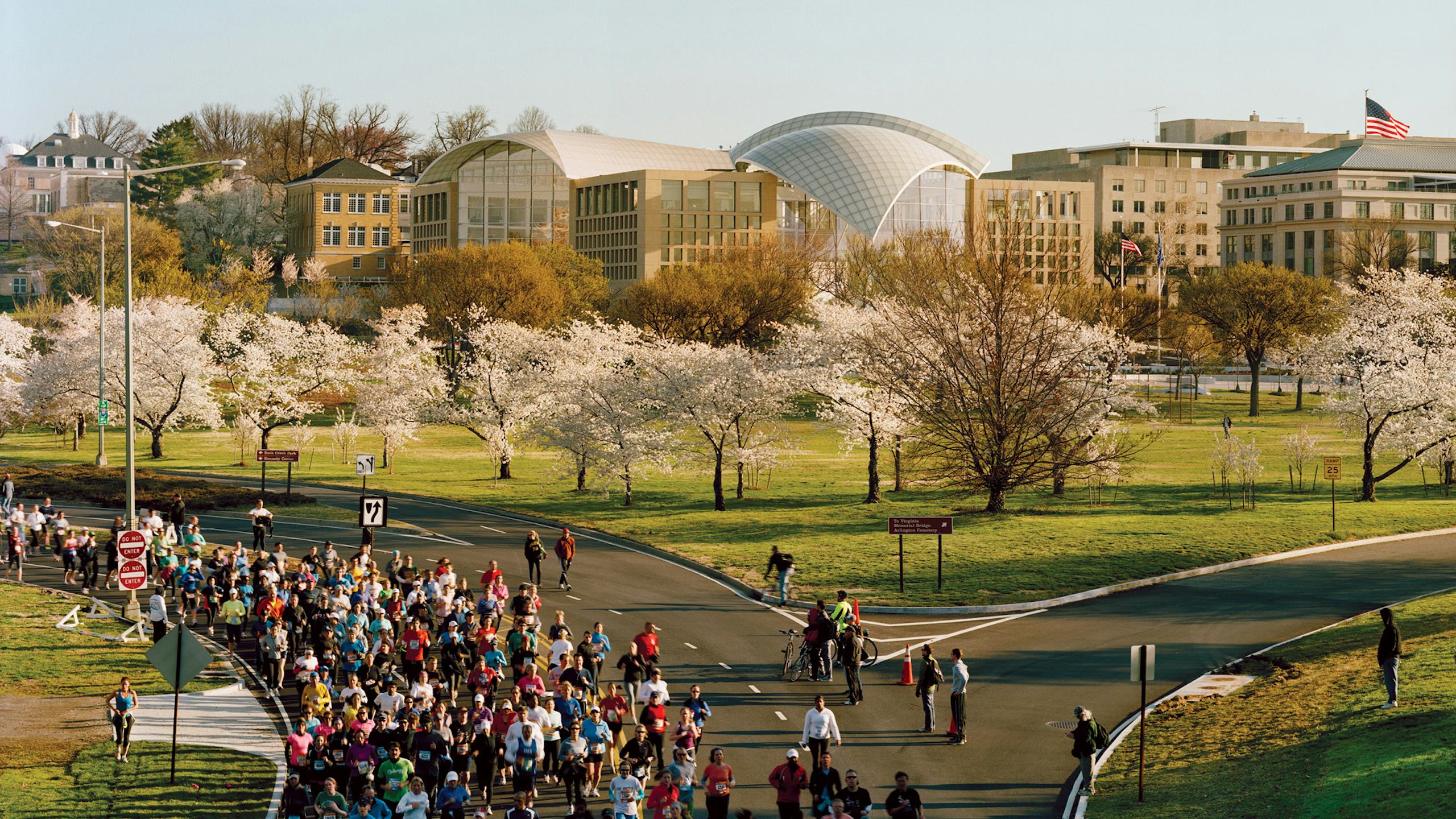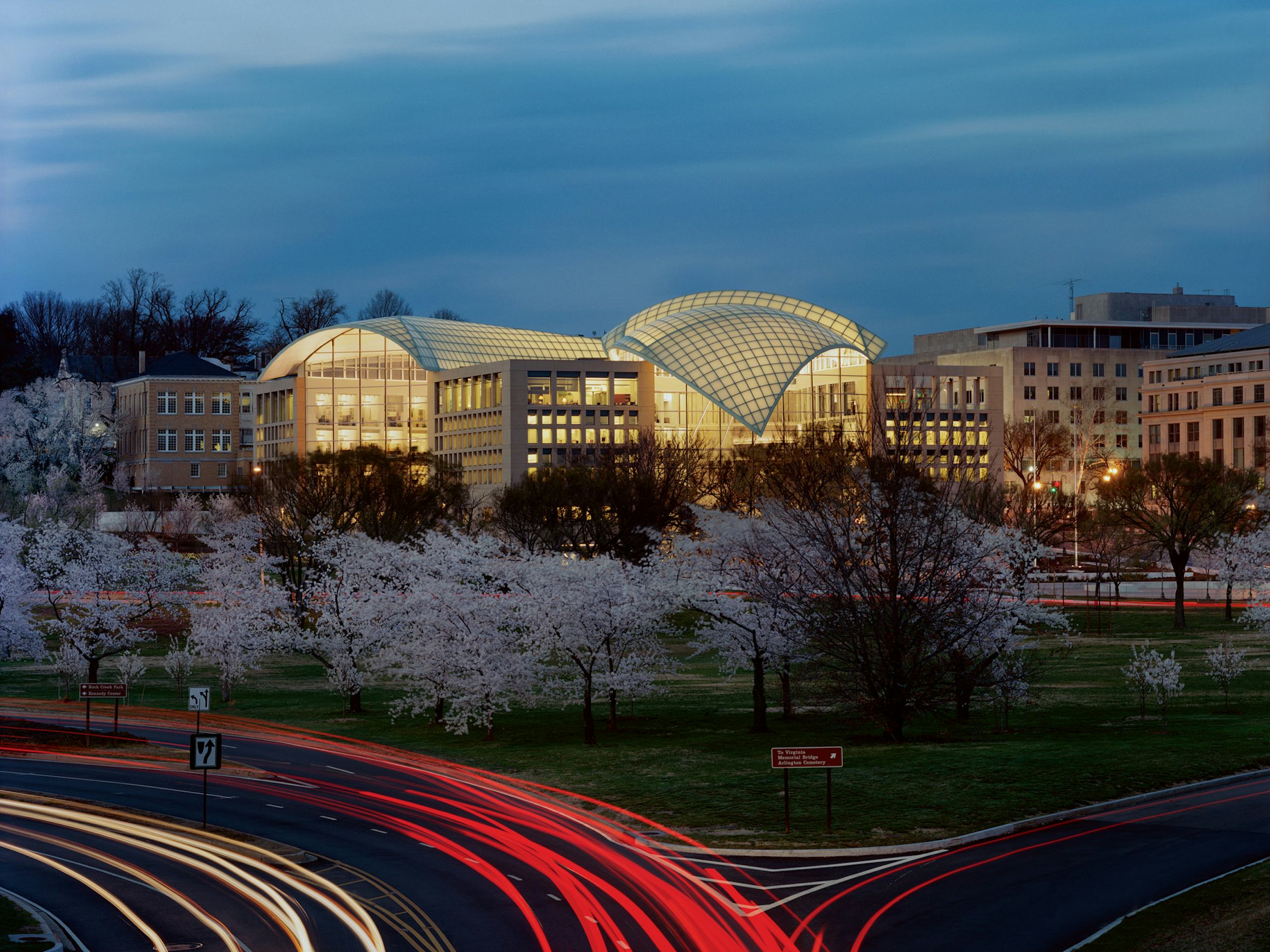United States Institute of Peace
Located at the corner of 23rd Street and Constitution Avenue in Washington, DC, the United States Institute of Peace Headquarters occupies the northwest corner of the National Mall, opposite the Lincoln Memorial. As the organization’s first permanent home, the Institute’s headquarters is specifically designed to support the critical mission of international conflict management. The program includes administrative offices, research facilities including a library and an archive, a conference and negotiation center, and an interactive educational center dedicated to the theme of peacemaking.
The headquarters has a dual life. On the one hand, it is a very public building. It incorporates ceremonial public spaces, an education center, a public space, a conference center, an auditorium, press rooms, and the like. On the other hand, there are more private, contemplative spaces, including a research center, where scholars can pursue their studies and prepare to share information throughout the world. The building has two entrances and two centers of activity, focusing on the distinct public and private roles of the institute.
The Institute of Peace was created by Congress in 1984 as a quasi-public agency to pursue peace and conflict resolution. Visual links through the building balance private research and public collaboration.
Building Section
The two central atria bring daylight to every working space in the building and provide views of the city.
The open atrium spaces encourage interaction, providing places to share a coffee or have a conversation. Five levels of offices feature window walls that open onto the spaces; in this way, work and activity in the building are not secretive but visible. There is a delicate balance between privacy and community; the majority of the building’s inhabitants enjoy private offices, but everyone is visible across space, making each person aware that he or she is part of a greater whole. During the day, the exterior assumes a shell-like quality evoking the domed surface of the Jefferson Memorial, and, at night, it becomes a beacon on the skyline, glowing from within to reveal the lattice structure. The glass roofs appear opaque and white on the exterior during the day and glow with white light from within at night – visible amongst the monuments of the National Mall as well as from the western entry to the city across the bridges from Virginia.
The larger south-facing atrium faces toward the Lincoln Memorial and is a great hall for public events and also accommodates a Peace Education Center. A smaller atrium facing north to the Potomac River is the hub of research spaces in the building. The building is LEED-certified Gold, the first building on the National Mall to achieve this distinction.










